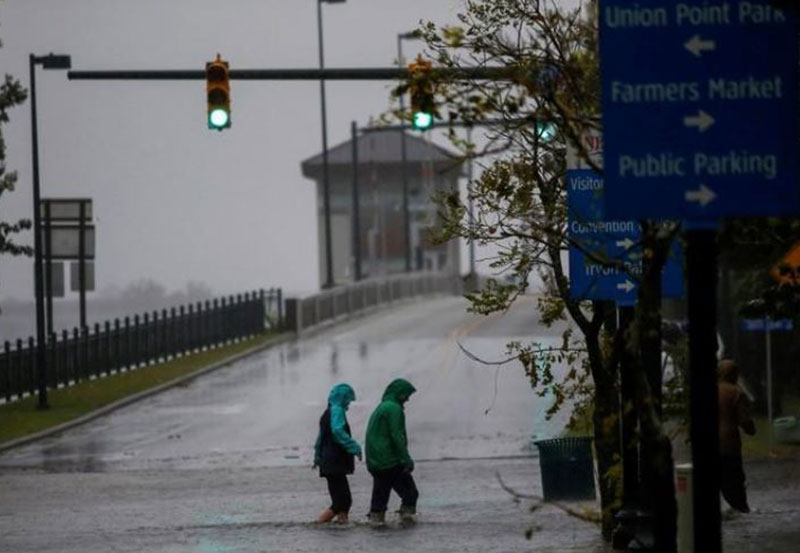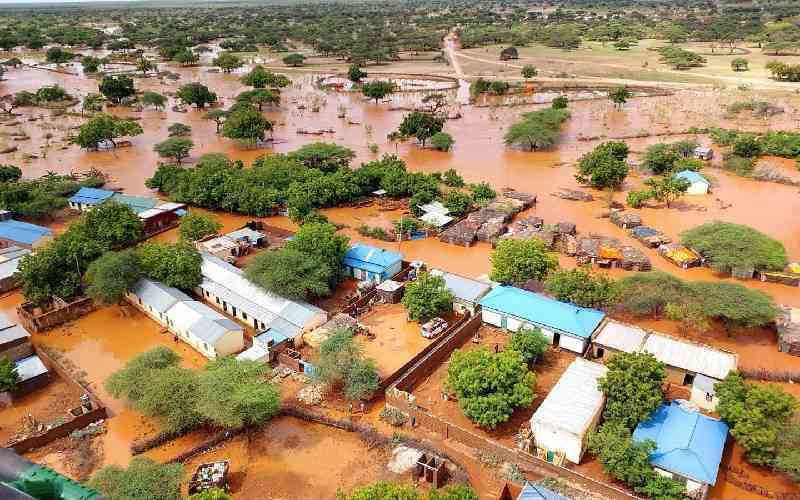
Flooding from Hurricane Florence swept across the Carolinas early on Friday as the massive storm surged toward the coast, threatening record rainfall and leaving scores trapped by rising waters and thousands without power.
Florence, set to make landfall on Friday, was expected to cover almost all of North Carolina in several feet of water, State Governor Roy Cooper told reporters. The National Weather Service said as much as seven inches of rain had fallen overnight in some coastal areas.
With the brunt of the slow-moving storm yet to come, about 150 people were awaiting rescue in New Bern, a city near the coast, where a gauge on the Neuse River recorded 10 feet (three meters) of inundation, the National Hurricane Center (NHC) said.
“If anybody could help... our cars is under water and so is our house. Stuck in attic,” one local called Bree said on Twitter.
The downtown area of the city of 30,000 people was under water, city authorities tweeted. “Some areas we can’t get to at all,” said Amber Parker, a spokeswoman for Craven County Emergency Management told broadcaster MSNBC.
Across the Carolinas at least 188,000 people were without power early on Friday. Utility companies said millions were expected to lose power and restoring it could take weeks.
Florence’s center was about 25 miles east of Wilmington, North Carolina at 4 a.m. (0800 GMT) and moving west at 6 mph (10 km/h), the National Hurricane Center (NHC) said.
It was expected to make landfall near Cape Fear, North Carolina, whose river was forecast by Monday to reach two feet above the record level it hit during Hurricane Floyd in 1999, the National Weather Service said.
Service forecaster Brandon Locklear predicted Florence would drop up to eight months of rain in two or three days.
Forecasters also said the Category 1 storm’s extreme size meant it could batter the U.S. East Coast with hurricane-force winds for nearly a full day. On Thursday evening it was packing peak winds of 90 mph (150 km/h).
‘Spooked’
About 10 million people could be affected by the storm and more than 1 million were ordered to evacuate the coasts of the Carolinas and Virginia, jamming westbound roads and highways for miles.
Roads and intersections on North Carolina’s Outer Banks barrier islands were inundated.
At least 12,000 people had taken refuge in 126 emergency shelters, Cooper said, with more facilities being opened.
Stay informed. Subscribe to our newsletter
The NHC said the threat of tornadoes was increasing as Florence neared shore and South Carolina Governor Henry McMaster said the heavy rain could trigger landslides in the west of his state.
NHC Director Ken Graham said on Facebook the storm surges could push as far as 2 miles (3 km) inland. Heavy rains were forecast to extend into the Appalachian Mountains, affecting parts of Alabama, Tennessee, Kentucky and West Virginia.
Emergency declarations were in force in Georgia, South and North Carolina, Virginia, Maryland and the District of Columbia.
Some residents ignored calls to evacuate.
Near the beach in Wilmington, a Waffle House restaurant, part of a chain with a reputation for staying open during disasters, had no plan to close even if power was lost, and there were lines to get in on Thursday evening.
Will Epperson, a 36-year-old golf course assistant superintendent, said he and his wife had planned to ride out the storm at their home in Hampstead, North Carolina, but then reconsidered. Instead, they drove 150 miles (240 km) inland to his mother’s house in Durham.
“I’ve never been one to leave for a storm but this one kind of had me spooked,” he said.
 The Standard Group Plc is a
multi-media organization with investments in media platforms spanning newspaper
print operations, television, radio broadcasting, digital and online services. The
Standard Group is recognized as a leading multi-media house in Kenya with a key
influence in matters of national and international interest.
The Standard Group Plc is a
multi-media organization with investments in media platforms spanning newspaper
print operations, television, radio broadcasting, digital and online services. The
Standard Group is recognized as a leading multi-media house in Kenya with a key
influence in matters of national and international interest.
 The Standard Group Plc is a
multi-media organization with investments in media platforms spanning newspaper
print operations, television, radio broadcasting, digital and online services. The
Standard Group is recognized as a leading multi-media house in Kenya with a key
influence in matters of national and international interest.
The Standard Group Plc is a
multi-media organization with investments in media platforms spanning newspaper
print operations, television, radio broadcasting, digital and online services. The
Standard Group is recognized as a leading multi-media house in Kenya with a key
influence in matters of national and international interest.







